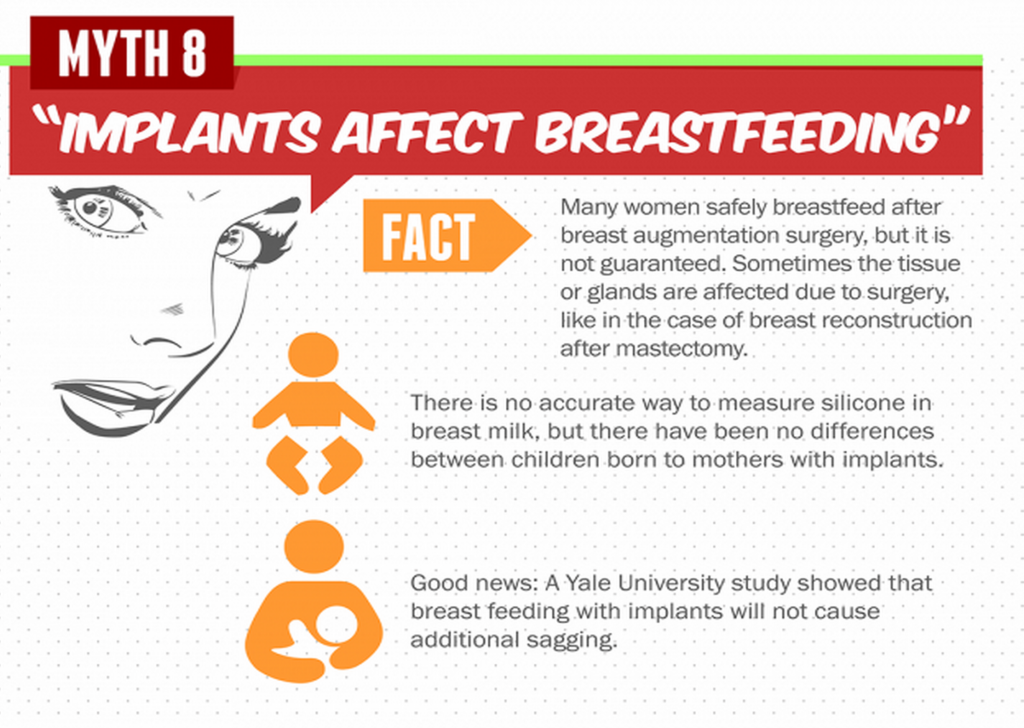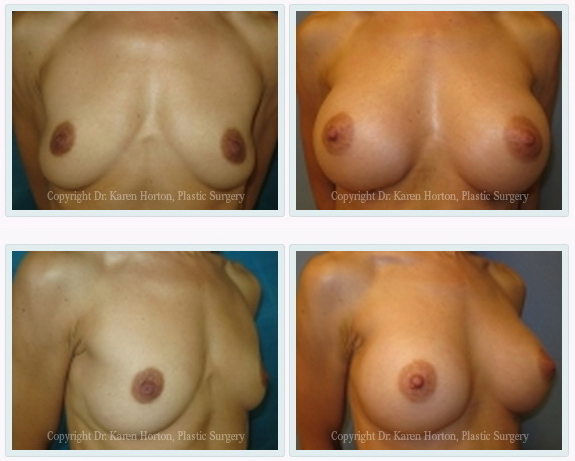Plastic Surgery Myth #8: Implants affect breast feeding
 Breast implants are placed to augment the natural volume of a woman’s breasts, to correct congenital asymmetries or abnormalities (such as Poland Syndrome or tubular breasts), as part of a Mommy Makeover procedure, or to help add volume during a concurrent breast lift (known as mastopexy-augmentation).
Breast implants are placed to augment the natural volume of a woman’s breasts, to correct congenital asymmetries or abnormalities (such as Poland Syndrome or tubular breasts), as part of a Mommy Makeover procedure, or to help add volume during a concurrent breast lift (known as mastopexy-augmentation).
Breast augmentation, by definition, involves placing a breast implant in the space behind the breast (subglandular technique) or also partially behind the pectoralis major muscle (submuscular or dual-plane technique). Read my blog posts about how I strive to produce the most NATURAL RESULTS and why I choose the particular techniques and implant types for most of my patients.

Before and after silicone gel breast augmentation in a “nulliparous” patient (has not yet had children). Implants were placed above the muscle to preserve muscle function and achieve the most natural results.
There are several types of breast implants available, and all have some features in common. Each has a silicone shell, and all have been carefully studied and approved by the FDA for implantation as a medical device. The fill may be either silicone gel (which is “cohesive” and is an inert substance – meaning there is no associated reaction or potential for allergy by the body), or with saline, which is sterile salt water. Silicone gel breast implants have some distinct advantages – read my comments about silicone breast implants, including the science behind this device and further information about breast implant SAFETY here.
The function of a woman’s breast is two-fold:
- To produce breast milk and enable breast feeding
- To facilitate erogenous sensation to the nipple
Having a breast augmentation procedure should not disrupt either of these abilities! During a consultation for breast implants, I discuss all the potential risks and complications of surgery with my patients, including the possibility that following any type of breast surgery, including augmentation, a woman might not be able to breast feed. Being a woman Plastic Surgeon and a mother myself who was able to nurse my twins for a full year, I understand the importance of breast feeding and would never offer my patients any procedure that would take away this vital and once-in-a-lifetime breast function for your children!
However, the techniques I ultimately select for breast implant surgeries preserve the best possibility to successfully breast feed future babies. My website specifically addresses this question. Specifically, an inframammary fold incision (hidden in the natural fold under the breast) avoids cutting through ducts connecting the breast glands to the nipple, and does not directly divide nerves and blood vessels that travel to the nipple.
This is in contract to other breast augmentation incisions such as ones that travel around the areola (periareolar incision) or through the areola and around the nipple (trans-areolar incision). I rarely use the axillary incision (armpit) for breast augmentation due to the presence of bacteria in this area, it leaves a visible scar that many patients do not wish, visualization during the procedure is poor, and the fact that it is generally a “one time incision”, meaning it cannot normally be used for additional procedures, should they be necessary.
Silicone gel implants contain “cohesive” silicone gel, which acts like a gummy bear and stays in two pieces if it is cut in half.
Regardless of the type of implant selected, there is no significant difference in the potential complication rate to women. Having silicone gel implants does not increase any possibility of risk to a mother or her babies. Studies evaluating the amount of silicone between babies who were breast fed by mothers with silicone gel breast implants and babies who were bottle fed formula or milk from another source (using a silicone nipple) have found no significant difference in detectable silicone levels in babies’ bodies – presumably from normal environmental exposure of this polymer used widely in modern society.
Finally, having breast implants in place does NOT increase the possibility of sagging of the breasts after breast feeding. Many of my patients are “nulliparous” (have not yet had children), while many others have had children and are seeking a Mommy Makeover. I see my patients yearly after their surgery, and I am happy to say that pregnancy and breast feeding with implants does not negatively affect their results. I also ask women to follow up and let me know whether they are successful in nursing their children in the future. I receive many fun pictures through email or text message in the future, with an image of their baby nursing on their breast, with breast feeding success!
To learn more about breast implants, how to achieve a natural result and more about the ability to breast feed after an augmentation procedure, contact our office today!
